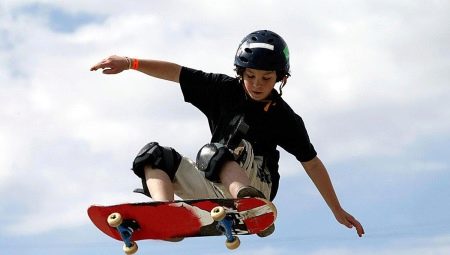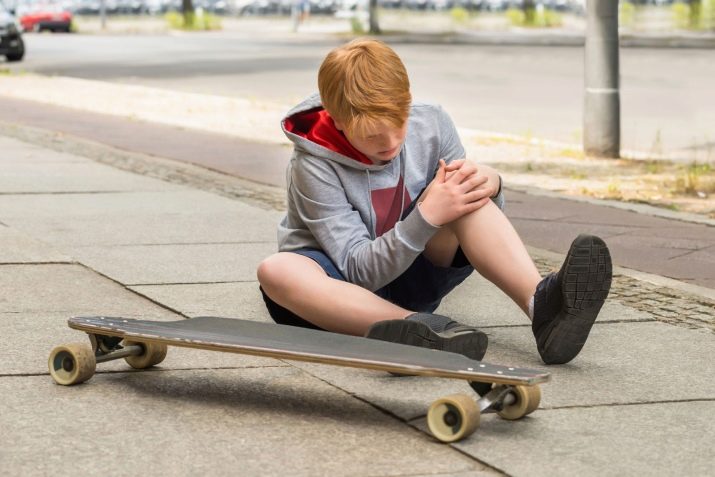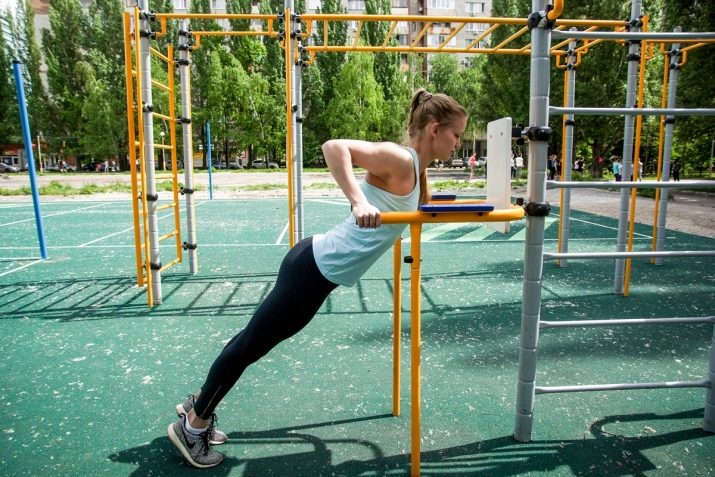Skateboard tricks: types and rules of execution

Today, skateboarding is an extreme sport that requires the skater to have a perfect sense of balance, perfect control of their movements and complete focus. These qualities, together with an expensive and balanced skateboard, can make the skater literally hover over obstacles and write skillful pirouettes on completely flat sidewalks.
In this article, you will learn about easy and difficult types of skate tricks, as well as the technique for performing some of them.

General principles of teaching
If you want to learn professional and stunt skateboarding, you need to start learning from the very basics. Below are the key learning principles that are sure to come in handy for beginners in skateboarding.
- Wear protective gear before every workout. in the form of a helmet, elbow pads and knee pads. The most important piece of equipment is the helmet - if the wounds on the arms and legs can heal, then the injured head is not so easy to heal.

- First step - figure out which of your legs is the guide and which is the jogging... As a rule, the strongest one acts as the jogging leg - for right-handers, this is the right leg, and for left-handers, respectively, the left.
To clarify this point, just stand on the skate and try to push off with each foot - the jog will be the one that is more comfortable to push off for gaining speed.

- A very important point if you want to learn how to ride a skateboard - choose the right site... Beginners often make the mistake of choosing specialized skate pitches with obstacles and slides - first you need to learn how to control the skate, and flat and smooth asphalt surfaces are best suited here.

- By "click" is called a technique during which the skater makes a sharp blow on the deck with a jogging foot and presses forcefully on its back. At the same time, the skateboarder pushes off the skate platform and makes a jump on one leg.

- "Exhaust" - The second most important technique that you need to hone if you want to learn how to ride a skateboard. As you move, the foot of the guide foot bends inward, up and forward - this technique lifts the front of the board into the air. As the skate rolls over, the skater hovers and presses his knees to his chest.

- It is very important at the time of the jump to monitor whether the skateboard has finished spinning... As soon as the moment comes, your task is to straighten up and catch the skateboard with your feet, pinning it to the ground. If it works, just keep moving, stabilizing your balance as much as possible so that the landing is comfortable and easy.
Your knees should be bent and your feet should be in place of the board bolts.

- The click together with the hood form a trick called "Ollie"... It will take a lot of time to learn how to perform these movements as accurately as possible. Your main task in the trick is to learn how to control the movement of the skate and catch its turns during the jump for a smooth landing.

Safety regulations
Skateboarding is not a very safe sport in terms of injuries, concussions and fractures. Especially when learning to ride a skateboard, such injuries will be difficult to avoid, however, by observing some safety rules, their number can be minimized.

- It has already been highlighted as one of the main principles of skateboarding obligatory presence of protective ammunitionHowever, in the case of a skateboard, such protection should not only be reliable and safe, but also take into account sudden movements, jumps and turns.
This should be the most comfortable ammunition that will not interfere with your movements and cause discomfort.


- The requirements for maximum comfort concern not only protection, but also suitable clothing for skateboarding... Clothing should not hinder movement, cause sweating or fatigue. Riding a skateboard is a constant movement, regular work not only of the legs, but also of the arms, so it is better to choose spacious clothing options for practicing. At first glance, this factor may seem insignificant, but poorly chosen clothing greatly affects the first impression of skateboarding.

- For skateboarding always choose areas of the sidewalk free of people... Try to avoid areas where people often run, ride bicycles, or walk with children. When choosing such sites, there is a great chance to harm not only yourself, but also others.

- The best time to learn to ride a skateboard is calm and dry weather... You should not start training immediately after a heavy rain or early in the morning, when there may still be dew on the sidewalk.
Moisture greatly affects the braking properties of the skate, as well as its maneuverability.

- As with any sport, before training in skateboarding, you must first stretch your muscles... A little exercise with squats, stretches and a gentle ride will prepare your muscles for more serious stress. This will allow you to feel the skate faster and reduce the number of sprained injuries.

- If for the first steps in learning to ride a skateboard, absolutely any skateboard will suit you, then in order to do the minimum difficult tricks, you will need to buy a high-quality and professional model with a non-slip deck, good control and shock absorption.
When choosing a particular model, it is important to pay attention to its length, the height of the wheels, the material of the mounts and the deck.
All this indirectly affects the control of the skate - even one low-quality and cheap part can someday break or simply fail, which will lead to serious injuries. In addition, the skateboard must be constantly monitored to prevent wear, cracks or roughness. Also, regularly check that the bolts and fasteners are secure.

- To put less pressure on the ligaments and muscles of the legs, bend your legs slightly during landing in all types of tricks - it will also provide minimal cushioning and will greatly help maintain balance.

The simplest options
Once you have mastered the basic basics of skateboarding, learned how to control its movements and have mastered all the safety rules, you can start mastering the simplest and easiest tricks. Most of them will not require any special area - a level sidewalk with a pair of railings or curbs will be enough.
- 50-50 grind... Skaters also call this trick "to the edge". In order to do it, you need to find a flat surface with a border. The first step is to accelerate to high speed and adopt a standard stance (legs bent and set wider than shoulders). The second step is to focus on the place where you want to jump and push off the deck as if you were ollie, but without removing your feet from the board. If you succeed, freeze in place for a couple of moments, balancing, or go downstairs, again performing an ollie.

- BS Pop shove it... This is one of the basic tricks that can be taught to any beginner in half an hour. The peculiarity and simplicity of the trick is that it does not require strong acceleration and does not need special inclined surfaces. During the trick, the skater's legs make a light jump, during which the jogging leg pushes the deck, which should rotate 180 degrees. This trick is also based on an ollie, but does not require the foot to slide on the deck after clicking. In addition, this trick does not require wide-spread legs — the guide foot is in the middle of the deck when clicking, and the kick foot is at the back end of the deck.

- Nollie... This trick is considered a variation of the ollie - during it the guide foot is placed on the nose of the board and the jogging foot is placed in the middle of the deck. Then you should bend down and jump so that the back of the deck is higher than the front. Legs during the jump are pressed close to the deck, and the skate itself does not twist. During flight, the deck aligns for a comfortable landing.

- Ollie +180... This trick can be done with the front or back of the skate, depending on the kick leg. In order to make a classic +180 front ollie, you need to put your feet in a classic stance, then squat down slightly and jump (lifting the back of the skate), consistently turning your body and shoulders towards your back.
At the same time, the feet do not lag behind the deck, so that the position of the skate adjusts to the skater's feet.
- Kick flip Is one of the most popular tricks among beginners. The technique is based on the classic ollie, but with a push on the edge of the skateboard while jumping. A light push provides a rotation of the skate around its axis, while the skater controls the position of the deck and lands on a straightened skateboard.

- Pop show... This trick resembles an allie +180, but in this case a strong jump is performed, during which the feet do not touch the deck. The scheme for performing this trick is as follows: the back leg is sharply retracted back with a slight click, while the front leg bends in the jump and rises up along with the deck. During the turn, the feet should be in the direction of the jump. The board rotates 180 degrees during repulsion in flight and is held by hands during landing on the sidewalk.

After completing these basic tricks, you can start transitioning to their more complex variations: variat kick-flip, double kick-flip, and others.
Difficult tricks
If you have managed to perfect the most basic tricks on a skateboard to perfection, then it's time to turn to more complex tricks that require more dexterity and an impeccable sense of balance.
Below is a list with the names of the most difficult tricks to perform on a skateboard.
- Receptions like board slide refers to all skateboarding tricks that involve ollies at the edges of a platform or rail, while the deck is parallel to the surface of the railing and slides along them. It is best to choose slippery varnished surfaces for this trick - otherwise the glide will not be as effective. Sequence of actions: gain low speed, then, turning with the help of an ollie 90 degrees, jump onto the railing so that the deck is perfectly perpendicular to them.
The main task when sliding is to maintain balance and balance to the end of the railing, after which you can use the ollie to return to the sidewalk (remember to bend your knees).

- Hard flip is a sophisticated version of kick flip. For this trick, your hind foot should be at the very edge of the deck and your front foot should be in the middle of the deck at a slight angle. During the trick, the jogging foot makes a strong click, while the front foot makes a scooping motion and glides around the deck to allow the skate to flip vertically right between your legs. If everything is done correctly, the deck should twist 360 degrees, after which it is fixed with the feet. In principle, this technique can be considered a hybrid of kick-flip and pop-shuit.

- Flip 360 (some also call this type of trick triple somersaults). This technique is rightfully considered the most beautiful, but also the most difficult among the existing skateboard tricks. In this case, there is practically the same execution technology as in a hard flip, however, the knees do not bend so much and the deck makes a 360 turn of both the kick flip and the pop show.
The main condition in this trick is to catch the moment when the deck is in a horizontal position - this is a sign in order to engage the deck with the feet.

- Heal flip considered the complete opposite of kick flip. In this case, it is the front leg that protrudes. The trick starts with a classic ollie position, then the front foot, which is initially in the center of the deck, slides to the front edge of the board, which is turned around with the heel on its axis. The main subtlety of this technique is to always keep the board in front of your eyes and press your knees to your chest as much as possible so as not to interfere with the rotation of the board. If the board makes a full revolution around its axis, it should be caught with the heels and bent over to cushion the landing.

For a better understanding of the technology for performing some tricks, you need to familiarize yourself with the video lessons of professional skaters - fortunately, such materials are not a problem to find on the Internet. Watch the video below for the five simplest tricks for beginners.








